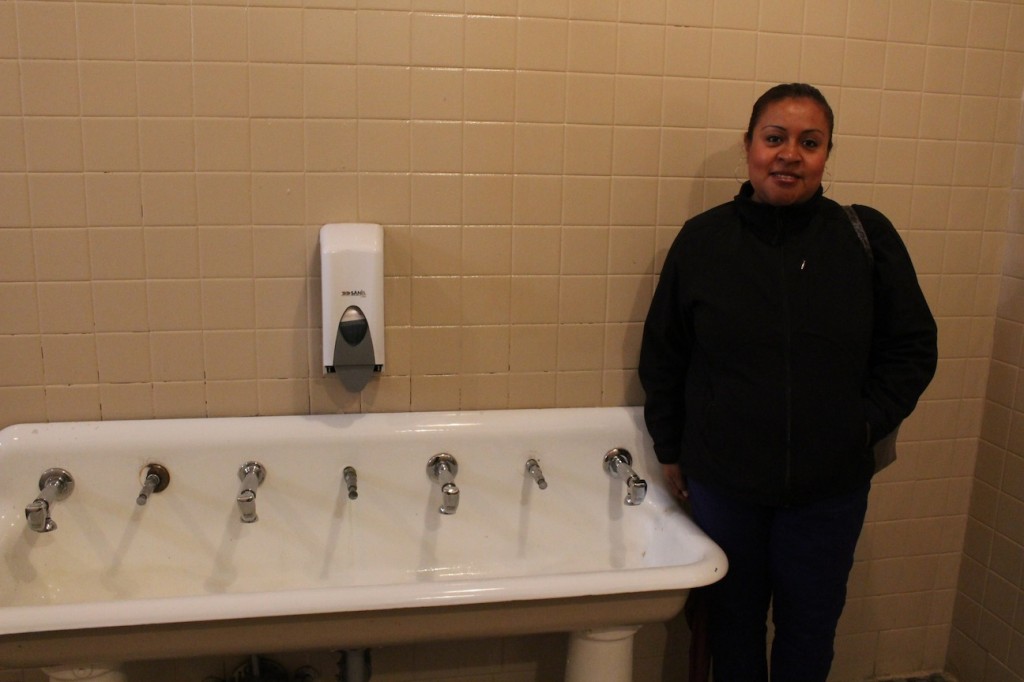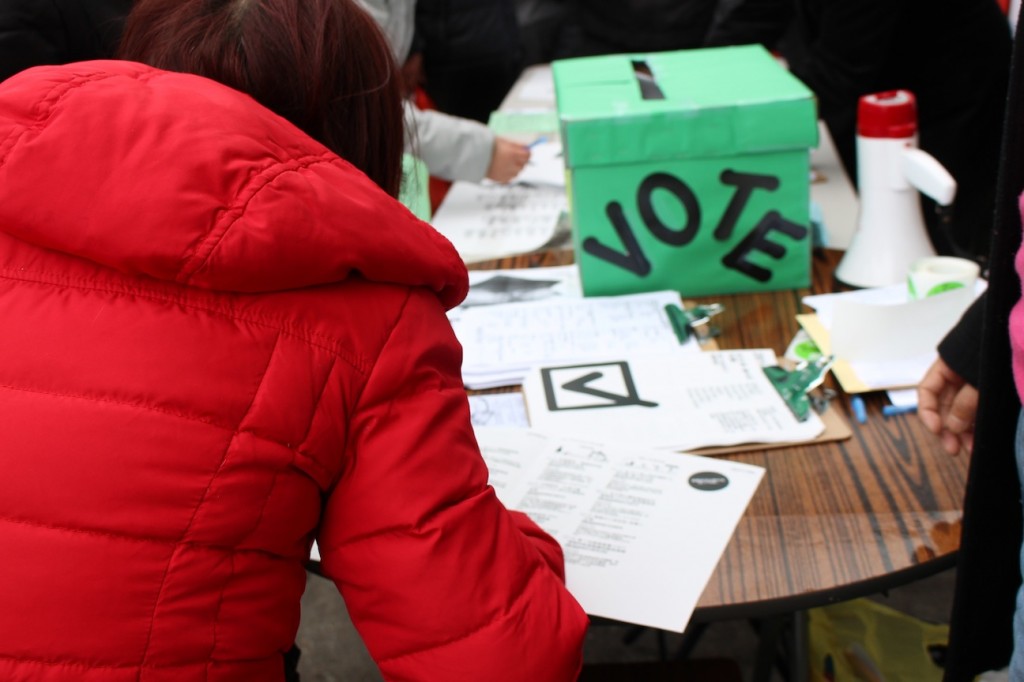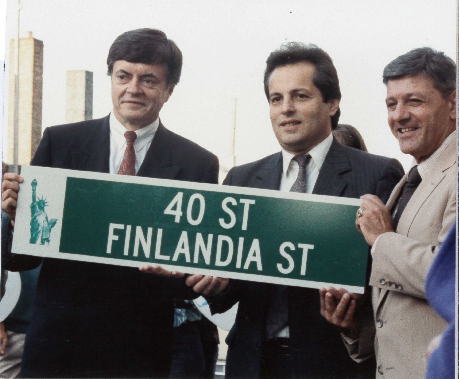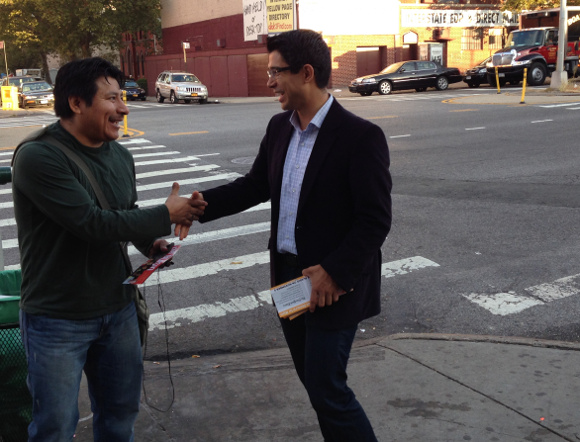Council District 38, which includes the heavily Asian and Latino Sunset Park, is a testing ground to see whether an experiment in direct democracy can meet its lofty goals…

April 4, 2014
It’s a cloudy Sunday at the end of March, and the corner of 55th Street and Eighth Avenue in Sunset Park is buzzing with the energy of an election day. Bullhorn in hand, Jimmy Li is standing behind a folding table littered with paper ballots, a jumble of pens, milk tea cups, and a box emblazoned on two sides with the word “VOTE” in large block letters.
Switching rapidly from Mandarin to Cantonese to Fujianese, the 35-year-old Li is entreating passersby to come and cast a ballot. “If you live in this neighborhood, you can vote! Don’t wait! Vote today and you can help make our community better! Come decide how to spend $2 million!”

It’s a voting day of sorts, but the ballots aren’t going to determine a new councilmember or mayor. Instead, each vote will help guide how this district will spend a portion of its councilmember’s discretionary budget. The projects are ones residents themselves have proposed and designed over the last four months.
Often described as “real people deciding how to spend real money,” this process is known as participatory budgeting, and represents a move to further democratize how public money is spent. For Sunset Park and the rest of Council District 38, there’s $2 million up for grabs, allocated by Councilmember Carlos Menchaca.
Nineteen projects have made it past the initial vetting stage in this district, and today is the first day that people can vote to fund them.
Li is worried. His voice is already starting to show signs of strain, and there’s still three hours to go before they pack up.
The ballots have been translated into Chinese and volunteers are ready with their pens and clipboards to help people answer questions and tick off boxes. Jimmy, clad in a suit and tie, is drawing a sizeable crowd. Pedestrians strolling up and down the busy avenue stop to listen; curious, but not necessarily ready to participate. By 1 pm, less than 20 people have cast ballots.
Li is worried. His voice is already starting to show signs of strain, and there’s still three hours to go before they pack up.
The Family Services Coordinator for the Chinese-American Planning Council in Brooklyn, he has been participatory budgeting’s biggest booster in Sunset Park’s Chinese community. He got involved at the start of the process, joining the district’s all-volunteer steering committee last summer when then-Councilmember Sara Gonzalez announced the district would participate for the first time.
Out of all of the districts involved in New York City’s participatory budgeting program, Council District 38 has the highest number of immigrant and non-English speaking residents, concentrated heavily in the Asian and Latino communities of Sunset Park. In many ways, it will serve as a testing ground to see whether participatory budgeting can successfully engage and empower immigrant residents who are often excluded from electoral politics.

In 1989, the Brazilian city of Porto Alegre allowed its residents to decide how to spend part of its municipal budget, dubbing the process “participatory budgeting.” Credited at first with improving the lives of the city’s poorer residents, the process has lately come under criticism for moving away from its initial mission. Fast forward to today, and the practice has spread to more than 1,500 cities and countries around the world.
Erin Markman, a policy and research coordinator at the Urban Justice Center, is part of a team of researchers that has been evaluating the participatory budgeting process since it was first implemented in New York City in 2011. “It’s not a consultation, it’s not a hearing where you give input but ultimately the decision making power lies in the hands of others,” she said, noting some of the ways participatory budgeting deviates from typical government process. “It’s the community members who decide everything.”
Since 2011, when four New York City councilmembers signed on to the program in its trial year, the popularity of participatory budgeting has grown: now, 10 councilmembers have joined the project, with three—including Councilmember Menchaca—for the first time.
Markman explained how the process has been working in New York City: It starts when a councilmember agrees to participate in the process and dedicates a minimum of $1 million from their annual discretionary spending budget.
Residents gather in their neighborhood’s churches, recreation centers, schools, and libraries to share ideas for projects that they hope will end up on the ballot and ultimately be funded…
From there, a committee comprised of community leaders (often from organizations based in the neighborhood) is convened by the councilmember to help plan and shape how the process will play out in their council district.
And that’s when the participatory nature of the process really begins. Typically, a series of neighborhood assemblies are held throughout the district, beginning around October. Essentially community-wide brainstorming sessions, residents gather in their neighborhood’s churches, recreation centers, schools, and libraries to share ideas for projects that they hope will end up on the ballot and ultimately be funded.
The task of winnowing what can amount to hundreds of different proposals falls on volunteer budget delegates, who spend hundreds of hours verifying all of the ideas from the neighborhood assemblies and editing them down into a final list of proposals that make it onto the ballot. This can involve anything from canvassing a neighborhood to check out whether there are in fact potholes on a certain block, to meeting with city agencies to discuss whether proposed projects are feasible.
Once the final ballot is set, expos are held to share the final list of projects with interested residents. The process culminates in a week of voting, where residents choose the top projects they want to see funded.
“And then,” said Markman, “the cycle starts again.”

All told, 14,000 New Yorkers in neighborhoods scattered across four boroughs have voted the previous two years, deciding how to spend $16 million on a range of projects, from basketball court renovations to laptops for schools to security cameras in parks and streets.
Many of those voters have been immigrants, including green card holders as well as those who are undocumented— another aspect of participatory budgeting that sets it apart from traditional government practices. In New York City, the process has been opened up to non-citizens; anyone over the age of 15 can take part, as long as they live in the district. In New York City, where an estimated one out of every five adult New Yorkers is a non-citizen, its proponents hope that participatory budgeting will help redefine what democracy means, beyond just casting a ballot every November.
“In all my time here, I’ve never participated in a community event, even here at the school,” Maria Barales said through an interpreter.
For Menchaca, the prospect of including immigrant residents in the process is what excited him the most, and he’s made participatory budgeting a top priority for his office. According to the 2010 Census, the district’s population is 35 percent Asian and 41 percent Latino, with large numbers of non-English speakers and immigrant residents.
“Especially for immigrants who are speaking different languages other than English, who are undocumented, who are having so many issues with government, it was important to bring this process to them,” Menchaca said in a phone interview. “And to invite them for the first time, to give them power through a vote. To give them power through their own inspiration.”
If Maria Barrales is any example, participatory budgeting in Sunset Park has already succeeded in getting a broader swath of its residents involved in local government.
An undocumented mother of two who has lived in the neighborhood for a decade, Barrales has gone from someone wary of getting involved in community issues to a budget delegate that has gone to dozens of meetings and become an outspoken advocate for her children’s schools.
“In all my time here, I’ve never participated in a community event, even here at the school,” she said through an interpreter.
But when she heard about participatory budgeting at a PTA meeting at PS 172, where her daughter is a fifth grader, her interest was piqued. “What really inspired me is the part in the pamphlet where it said, why are we letting other people decide how to use the resources in our community,” Barrales said. “It really resonated with me. It’s very empowering.”
She attended the Spanish-language neighborhood assembly held at the school late last year, volunteered to be a budget delegate, and has been promoting one of the projects that made it onto the ballot — a proposal to renovate the bathrooms at PS 172 — to her family and friends.

The process, she said, has made her realize that “as a community, we don’t participate in the way we need to.”
It’s stories like this that have led commentators to describe participatory budgeting as “revolutionary civics in action.” And now-City Council Speaker Melissa Mark-Viverito, one of the first to implement the process in her district, has called the process “profoundly democratic and inclusionary.”
But participatory budgeting is not without its critics, who tend to point out that the money involved is just a tiny drop in the bucket and that the process requires a time commitment too onerous for most neighborhood residents. One such critic is Bill Eimicke, a professor at Columbia University’s School of International and Public Affairs who has held a host of jobs in state government, most recently as former Governor Mario Cuomo’s deputy secretary for policy and programs. He’s been quoted before as saying: “You have meetings. You say, ‘Who likes this and who likes that?’ and whichever one is the best, then you do it. That sounds democratic, but it’s really not, right, because how many people actually go? Not that many. How many people actually know that it’s happening? Not that many. How many people really understand what the choices are? Not that many.”
Still, its believers argue that, if implemented thoughtfully, participatory budgeting can and does lead to increased community participation.
There are signs that this is already happening in New York City: Sondra Youdelman, the Executive Director of CVH, pointed out that in the previous two years New York City has run participatory budgeting programs, many districts have seen people of color, immigrants, and low-income people — all groups that tend to vote in lower numbers relative to their share of the population — turn out in higher numbers to vote on which projects to fund.
“…its believers argue that, if implemented thoughtfully, participatory budgeting can and does lead to increased community participation.
She’s hoping that holds true this year for Council District 38, which in its diversity represents both a challenge as well as an opportunity to demonstrate participatory budgeting’s potential.
“I think that the more that different communities and different languages are part of a district, the more complex it is to reach out to everybody,” Youdelman said. “I think [District 38] is an exciting space because there’s a lot of constituencies who may not be deeply engaged. So even minor engagement, 2,000 votes out of a total population of 160,000, is a huge bump in civic engagement.”
Councilmember Menchaca’s District Director Ana Maria Cruz has been leading the district’s participatory budgeting process, and says they made a concerted effort this first year to engage immigrant residents.
She estimated that 350 residents took part in the nine neighborhood assemblies held last fall, and reflected the diversity of the neighborhood, with 40 percent being Latino, and 30 percent Chinese residents of the district — numbers roughly on par with the breakdown of the entire population.
The turnout among Chinese residents so far is due in no small part to Jimmy Li, who estimated that he’s spent hundreds of hours translating all the documents, surveys, and flyers; organizing the Chinese-language neighborhood assembly held last November which drew almost 80 residents, and pounding the pavement to spread the word.
““I’m very fascinated by the idea that the community has a voice in how we spend money. Typically, Asian Americans are pretty shy in politics. They don’t vote that much.”
“Our community has a lot of issues, and a lot of times people don’t know how to get our issues addressed,” Li said. “I’m very fascinated by the idea that the community has a voice in how we spend money. Typically, Asian Americans are pretty shy in politics. They don’t vote that much.”
This last point gnawed at him in the days before the voting process kicked off last Sunday.

But as it turned out, he needn’t have worried. By the end of the day, and despite a little spring rain , the makeshift ballot box was stuffed. More than 350 people had voted, double the number of the two other voting sites in the district combined (while official numbers have yet to be released, a volunteer at another site said that as of 3:45 pm last Sunday, there had been less than 100 ballots cast at the other two locations). Most districts last year averaged around 1,000 votes total, after an entire week of voting.
“Today was pretty good,” Li said, adding that he had expected about 100 people to vote, and was surprised by the high turnout.
“At first, people couldn’t believe what I said. They’d say, is that for real? We the people have a voice?” Li laughed. “Then they said, ‘All right, all right. I’ll give it a try.’”



